Small boutique shops are taking over! These tiny, special stores sell just one type of item—but do it really well. They make shopping fun again when big-box stores feel boring.
While the idea of opening a boutique seems nice, there are many factors to consider before taking the plunge.
This blog covers everything you need to know to make your boutique dream a reality, from choosing the right niche and designing a welcoming space to navigating legal requirements and marketing strategies.
Let’s jump right in and see how you can create a successful boutique business!
Choosing a Boutique Niche & Theme
Do you dream of opening your boutique? Let’s figure out what style or niche suits you best, whether it’s fashion, home goods, or something unique that reflects your vision.
Fashion Boutiques
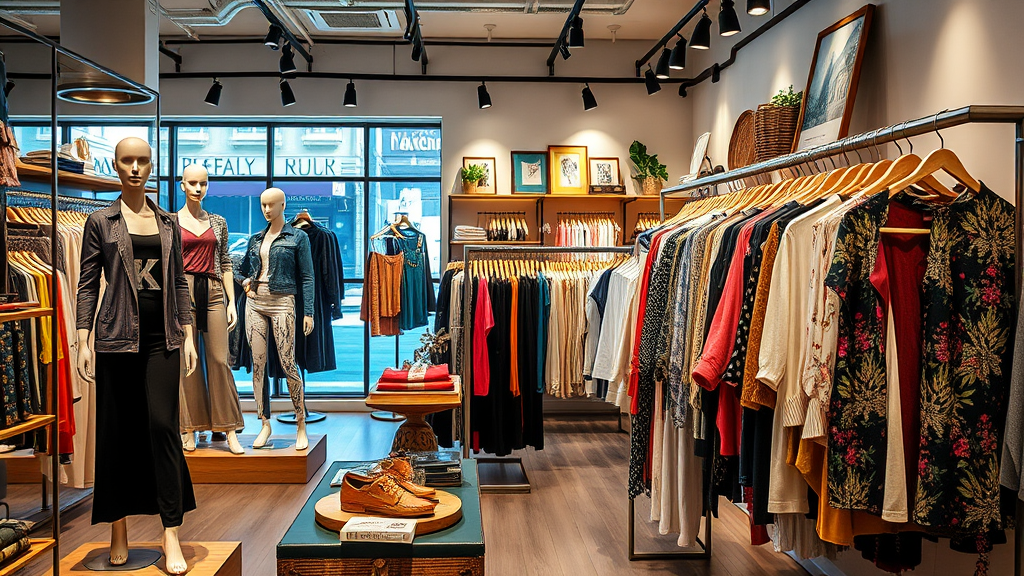
Fashion boutiques focus on selling clothing and accessories that make people feel confident and stylish.
You can specialize in women’s apparel, offering everything from trendy everyday wear to workout gear and vintage finds.
For those special occasions, you might offer fancy dresses or elegant accessories.
Whatever your niche, a fashion boutique allows you to cater to customers looking for unique pieces that fit their style and elevate their wardrobe.
Lifestyle Boutiques
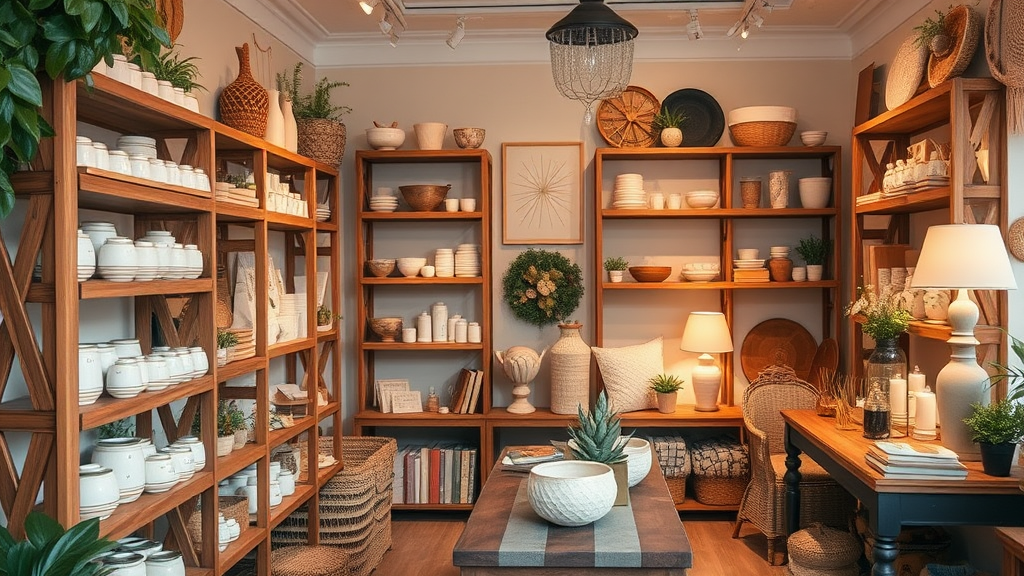
Lifestyle boutiques offer more than just fashion—they curate a unique selection of products that reflect personal style and everyday living.
These stores feature home decor, handmade items, and accessories that tell a story.
Whether it’s a collection of artisanal goods, eco-friendly products, or curated home essentials, lifestyle boutiques focus on creating an atmosphere that blends beauty, function, and individuality, making every visit a special experience.
Sustainable & Ethical Boutiques

Sustainable and ethical boutiques focus on environmentally conscious products that promote a healthier planet.
You can sell eco-friendly clothing made from organic or recycled materials, as well as upcycled items that give old products a new life.
These boutiques prioritize ethical sourcing, fair labor practices, and environmentally responsible manufacturing processes.
By offering goods that are both stylish and sustainable, you appeal to customers who want to make a positive impact through their purchases.
Pop-Up Boutiques

Commitment-phobe? Try a here-today-gone-tomorrow shop! Perfect for testing new brands without the long-term shop lease giving you nightmares.
Your best bet? Pick what makes you excited to wake up and sell every day.
Boutique Interior Design Trends & Inspiration
Looking for ways to make your shop stand out? Try these hot store styles to create a unique shopping experience.
Modern Minimalist Boutique
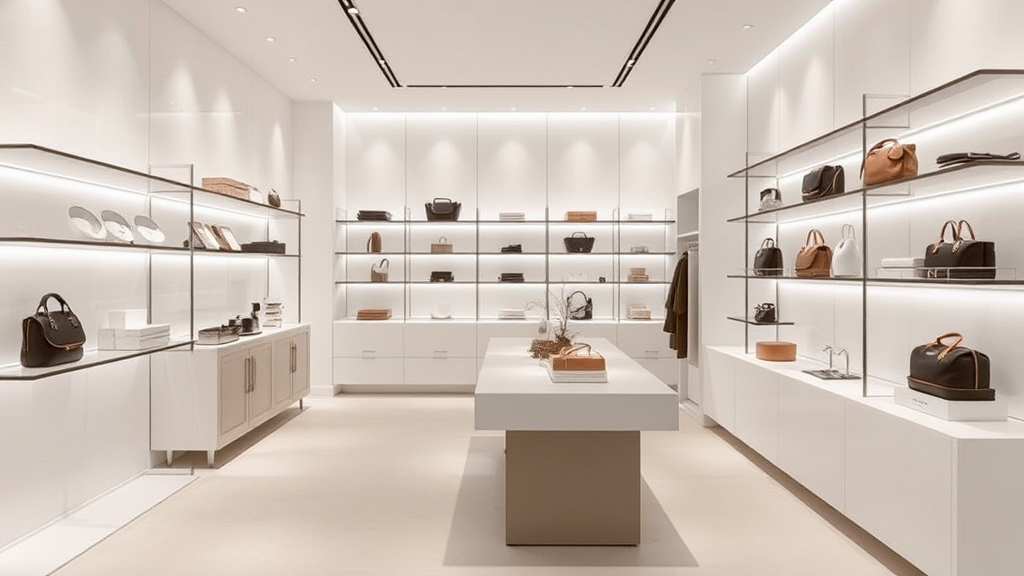
A modern minimalist boutique embraces simplicity and elegance with clean lines and uncluttered spaces.
Think white walls, neutral tones, and a focus on the essentials. This style allows your products to shine without distractions, showcasing them on sleek, minimal shelves.
Inspired by the “less is more” philosophy, a minimalist boutique creates a calm, inviting environment where customers can easily appreciate the beauty and quality of each carefully selected item.
Boho Chic Boutique
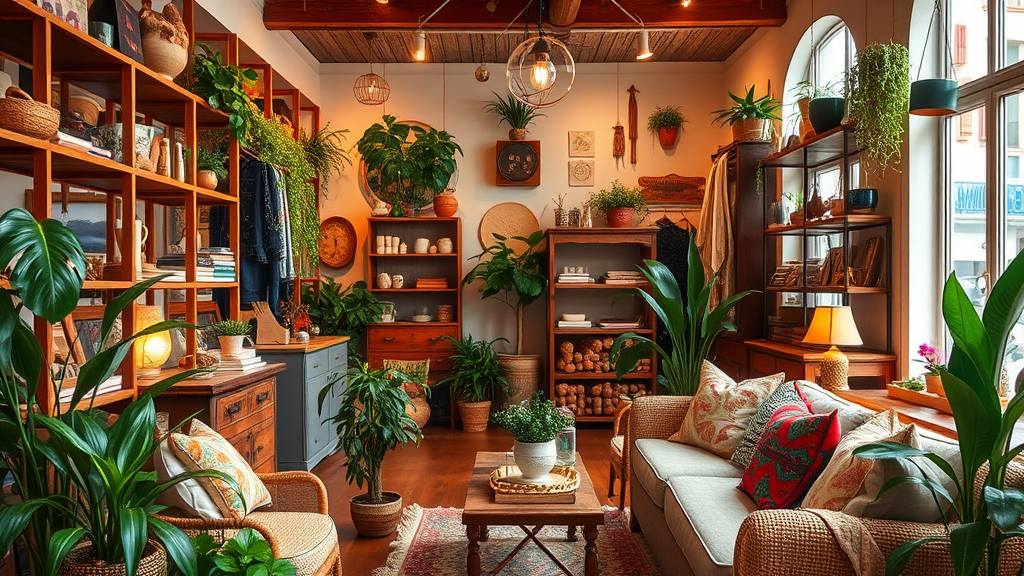
A Boho Chic boutique feels cozy and inviting, like stepping into your cool aunt’s eclectic living room.
It blends vintage and modern pieces with a laid-back vibe. Think colorful textiles, cozy rugs, wooden shelves, and plenty of plants to create a relaxed atmosphere.
Warm lighting adds to the charm, making customers feel at home while they shop for unique, bohemian-inspired clothes, accessories, and home decor.
Luxury Boutique Interiors
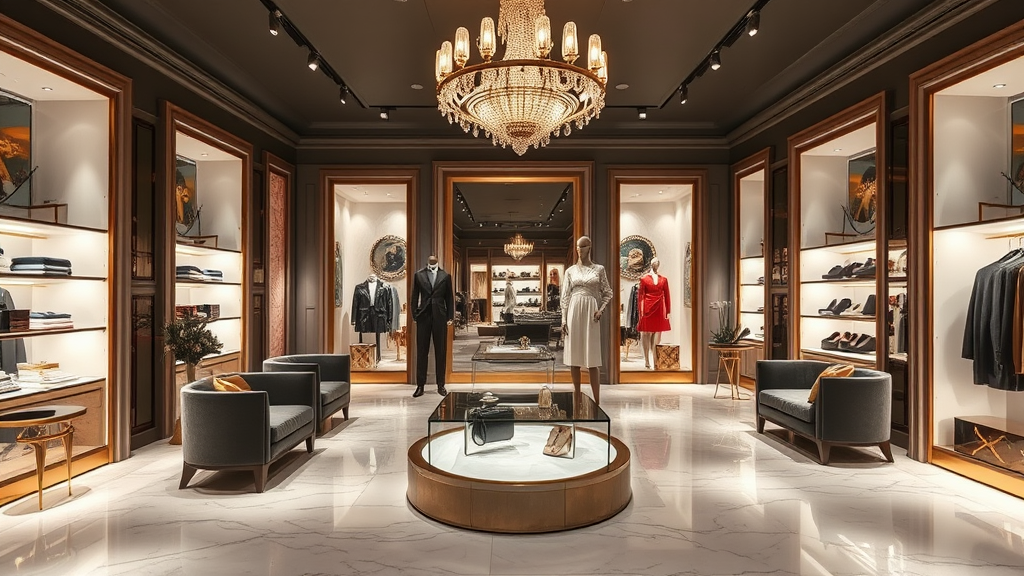
Fancy without being snobby. Good furniture makes people want to sit and spend.
Dress the mannequins in stylish, upscale outfits that reflect the luxurious vibe. Incorporate a statement piece—something bold and eye-catching to spark conversation.
As you know, one big wow piece gets people talking.
The overall design should highlight your products while making your customers feel like they’re in a refined yet welcoming space.
Tips for Small Boutique Setups to Save Space
When your shop is tiny, every inch counts! Here’s how to make your small boutique feel bigger:
Maximizing Space: Mount clothing racks on walls instead of floors.
Go up, not out! Try shelves that reach the ceiling and furniture that does double duty – like a bench that’s also storage.
Lighting & Ambiance: Good lighting makes small spaces pop.
Mix LEDs for basic light with spotlights to make products that wow customers. Windows are your friend; natural light makes any small shop feel more open.
Boutique Layouts: Open layouts feel bigger but can look messy. Structured designs with clear paths help shoppers find what they want without getting lost.
Creating Eye-Catching Window & Product Displays
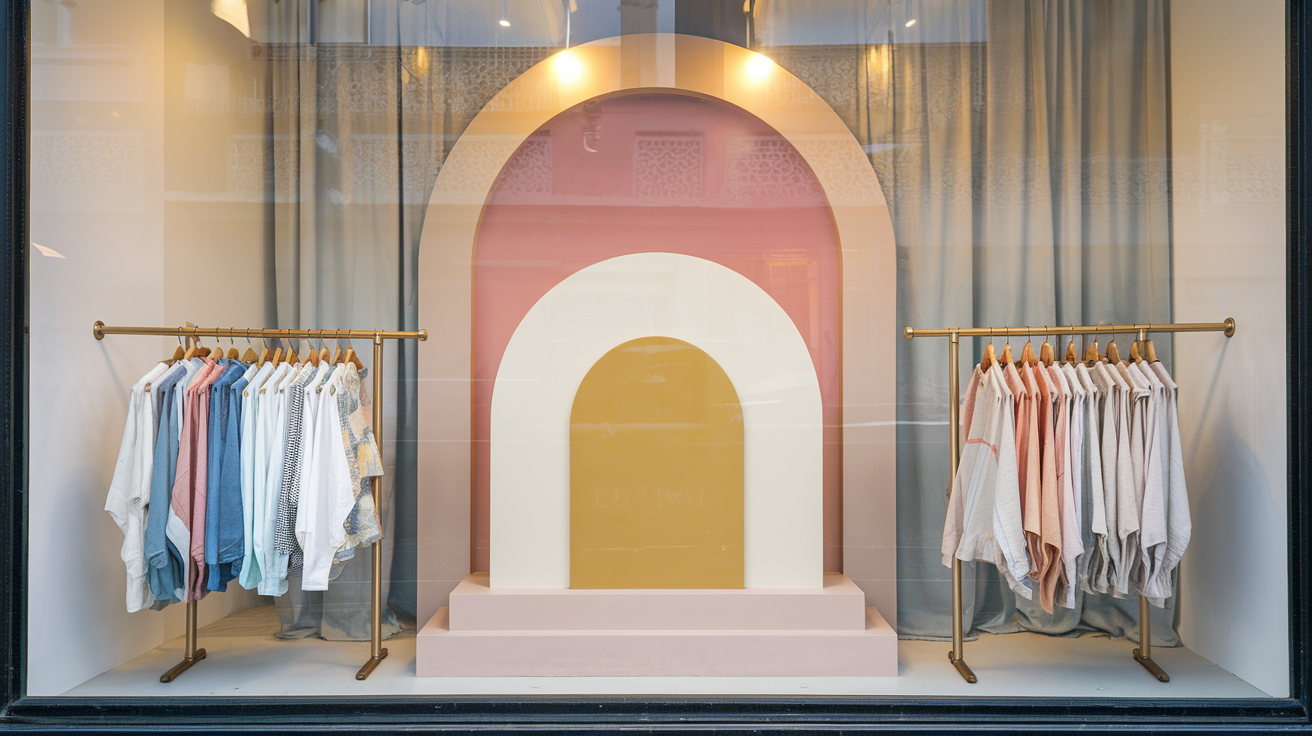
Your store window is like a first date—you need to look good, or they’ll keep walking. You have to attract your customers with window displays. How?
Keep it simple, but make it pop! Use one big item instead of twenty small ones. Put your best stuff at eye level where people actually look.
Using Color Psychology in Boutique Design: Colors make people feel things.
- Red makes them hungry to buy.
- Blue makes them trust you.
- Yellow grabs attention like a toddler having a meltdown.
Rotating Seasonal Displays for Higher Engagement: Switch things up every few weeks. When customers see the same mannequin for months, they stop seeing it.
Fresh displays = fresh wallets opening.
How to Start a Boutique Business
Finding the perfect spot for your boutique can make or break your business. For a physical store:
- Look for areas where your ideal customers already shop.
- Check foot traffic at different times of day.
- Don’t fall for cheap rent in a ghost town!
Or you can skip the rent and set up a shop online store with Shopify or Etsy. No fancy address is needed when your store fits in a phone!
Sourcing Products
Buy wholesale for better prices, go handmade for one-of-a-kind items, or try dropshipping to avoid storing inventory in your living room.
Wholesale: Buy in bulk at lower prices. You’ll need storage space, but you’ll make more profit per item.
Handmade: Perfect if you’re crafty! Customers love one-of-a-kind items and will pay more, but can you make enough to keep up with orders?
Dropshipping: No inventory headaches! But with less control over quality and shipping times. It’s like having a store without a stockroom.
Legal Requirements & Business Permits
Legal requirements and business permits are essential steps when starting a boutique.
You’ll need to obtain a business license to operate legally, a tax ID number for tax purposes, and any local permits specific to your area or industry.
Boring? Yes. Optional? Nope. Make sure to research your local regulations and stay compliant to ensure smooth operations for your boutique.
Budget Planning
Budget planning is essential when starting a boutique.Track every penny! Start-up costs include inventory, rent, website fees, and that coffee habit that keeps you going.
Don’t forget about smaller expenses like marketing materials and packaging.
By carefully managing your finances from the start, you can avoid surprises and ensure you have enough funds to cover both expected and unexpected costs.
Marketing Strategies to Promote a Boutique
When starting any business or brand, what’s the most important thing you do to boost it? That’s right—marketing is the way to go.
Let’s take a look at some marketing strategies you can use to promote your boutique.
Social Media for Boutiques
Instagram, Pinterest, and TikTok are gold mines for small clothing shops.
- Post photos of new items when they arrive.
- Show real customers wearing your clothes – not just perfect models.
- On TikTok, make short videos of outfit ideas or how to style that tricky piece.
- People love seeing the person behind the shop, so don’t be shy about showing your face!
In-Store Events & VIP Shopping Experiences
Turn shopping into a party! How?
- Host small get-togethers with snacks and drinks.
- Try a “Bring a Friend Friday”, where both shoppers get 10% off.
- For your best customers, create after-hours shopping with first dibs on new stuff.
These special moments make people feel important – and they’ll tell everyone about it.
Collaborating with Influencers & Local Creators
You don’t need Kim Kardashian to promote your shop!
- Find local people with 1,000-5,000 followers who match your style. Give them an outfit in exchange for posts.
- Even better – team up with local artists to make limited edition items only available at your store.
Offering Loyalty Programs & Membership Discounts
Make a simple punch card: buy 10 items, get one free.
You can also try a point system where spending builds up to discounts. Text special offers to members before anyone else sees them.
The secret is making customers feel like they’re part of an exclusive club, not just another wallet walking through the door.
Conclusion
Starting a boutique takes effort, but with proper planning, it’s doable. To build customer loyalty, you must stay true to your brand across all platforms.
You must also engage with customers, listen to their feedback, and address their issues quickly to keep them coming back.
Most of all, have fun with it. Your passion for your products will shine through and pull people in.
What’s your biggest worry about opening a boutique? Share your thoughts in the comments, and let’s solve it together!














